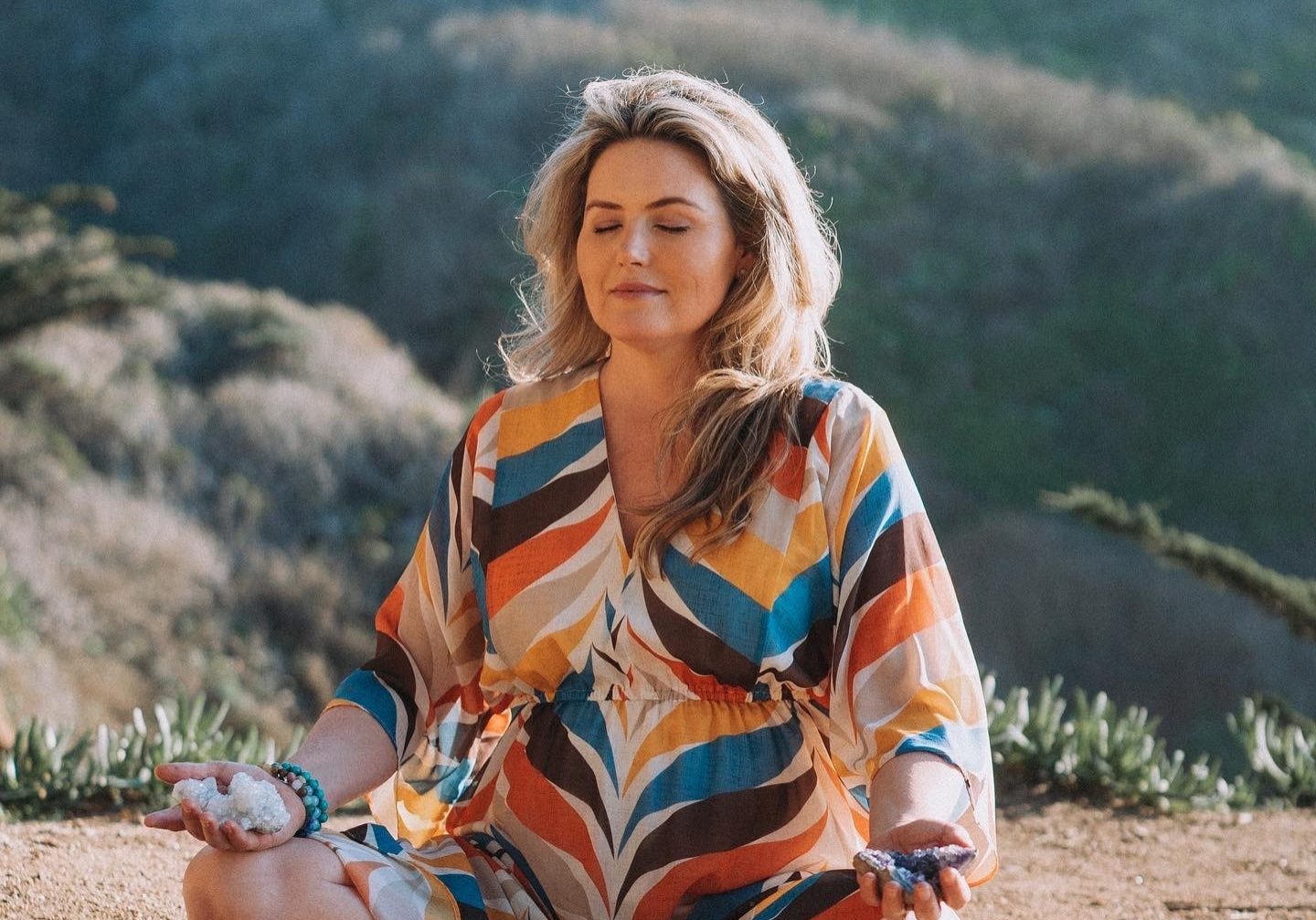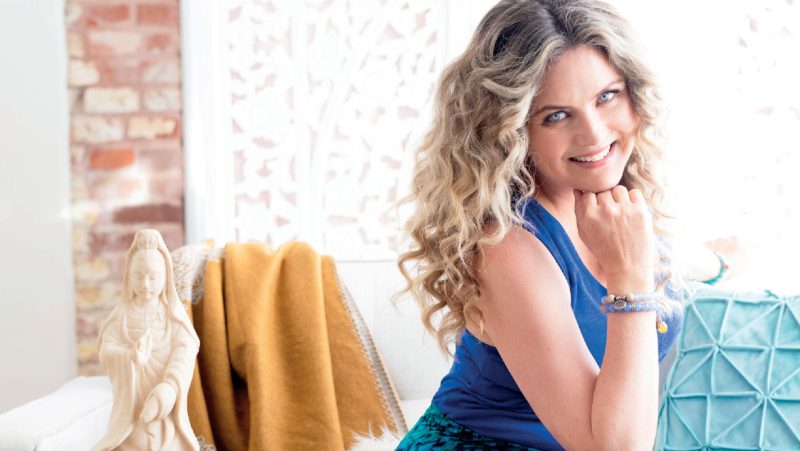
Yoga Postural Integration
Yoga Postural Integration Through Consciousness or The Energy Of Yoga - By Mellara Gold
Reading time: 6 minutes
Practicing yoga is an incredible way to become more aware of the emotional and physical body. Our bodies are a marvel, made up of complex systems that are eagerly waiting for us to understand them. When I first started a yoga practice over two decades ago, I was in a lot of pain after being diagnosed with five lower back bulging disks. The focus on physical alignment was important back then. It still feels as important; however, the postures, just on their own have taken a backseat to the subtle energies within a yoga practice.
In 1999, I took my first teacher training and it gave me a wonderful foundation that I still incorporate in my classes today, such as a balance of yogic postural alignment with inner body awareness. After around 18 years as a yoga teacher, I began to connect to the understanding that we are not just ‘like’ nature —we are, or have, Mother Gaia inside us too. When we are in alignment with the nature inside of us, our true (outer) alignment can change depending on the day. When we merge with this kind of inner cosmic flow, we might find that our practice is much more fluid too.
Our ‘true nature’ is not one particular alignment or posture, nor is it a one-size-all approach. As I began to sit with this idea, I realised that, up until now, my postural yoga practice had been based on a more scientific and methodical approach. I began to understand there is a place for both a deep knowledge of the alignment of each posture and to have grace for the individual’s own inner guidance. Now with either the student or teaching hat on, I find myself responding to poses with a deeper clarity, to truly meet my own being, and the student, in the moment. These many colours that make up our spirit, and human scaffolding, merge so sweetly with this non-dualistic approach to yoga.
While there are many different ways to practice yoga, a more gentle approach breeds an openness that allows us to develop more awareness within. True alignment just might be in appreciating what our body is giving us (in the moment) and less about being focused on the exact alignment itself. Essentially, we are making our practice safer by listening to what our body needs. Our practice then becomes a friendly exchange of inner-body awareness and outer-body flow.
By appreciating nature, we can love and feel that energy within us too, where we see nature flourish alongside us, like partners in our collective existence. We only need to take a look outside to see the wondrous examples of nature and apply them to our own inner life. Examine the stillness and flexibility of a coconut tree and how it can hold steady, yet in the midst of a storm, it bends and rides the wave of change that is given to it. We can apply this to our own storm of emotions that can rise up without notice. In our practice, we can ease into the postures that might be most healing to withstand the storm. This helps us to develop awareness inside of the postural practice, where one’s own specific alignment becomes clear and opens a path for self-understanding.
It is still important to have a base knowledge of postural yoga, especially if the practitioner has any injuries or ailments. A skilled yoga teacher can look at the student’s pose and assess where the student might be holding blockages, or where there is tightness. This, along with our own inner postural awareness, can take our yoga practice to the next level and yoke it all together: mind, body and soul.
In allowing for this new perspective in our yoga practice, we focus on the posture as a whole and we can feel our subtle energies and any emotions that are present. What we don’t need or isn’t serving us falls away on its own. From this place, we might ask our self, what can I do less of, and what is available to me in order to receive the gifts that are already present within.
Below is an example of a gentle practice with a focus on the ‘undoing’ of the poses on all levels of alignment. Be in the postures, rather than ‘do them.’
Start and end with seated meditation. Allow the breath to ‘just be,’ without trying to control it, and simply witness what is present. Breathe gently, inhaling and exhaling through the nose throughout the postures to allow for a deeper awareness to take place.
Seven essential postures to open and ground the body:
- Cat and dog tilt (cat/cow) – inhale, pause, then exhale and round the spine like a Halloween cat. Inhale, then arch into the dog tilt and continue linking the breath with the movement for 10 deep breaths.
- Downward facing dog – coming from the dog tilt, bend your knees, and bring your sit bones up high. With the belly button drawing in and the heart melting, breathe into your kidneys, so as to not fall into the lower back too much and to bring breath and buoyancy to the adrenals.
- Triangle – turn the left foot in just a little, and the right foot about 90 degrees or straight ahead lining up the front foot with the back heel, heel to heel. Keep the knees as straight as possible, unless you have a lower back problem, then bend slightly through the front leg. Press down into both feet evenly like your legs are roots grounding into the earth, and your upper body is the trunk of your tree's branches. Change sides and repeat on the other side.
- Child’s pose – breathe deeply through the transition into child’s pose. Bring your big toes to touch and open your knees about a mat’s distance apart, crawling so slowly into the moment. Stay here for 10 deep breaths.
- Cobra pose (sphinx variation) – lie down on your belly to come into this pose. Stretch your arms out front and draw in your belly ever so softly. Gently prop yourself up with the strength of your forearms with the elbows underneath your shoulders. Breathe deeply for about 10 breaths and try to soften your bum muscles as you lengthen your heart forward. Legs are about hip distance apart. Now come to your back.
- Easy twist – once you are laying down on your back, draw in your legs and hug them. As you exhale, draw in your belly button. Inhale and let go of your legs while still hugging them in. Exhale and drop them over to one side. Stay in the easy twist for about five deep breaths. Repeat on the other side.
Final rest (savasana) – Rest either laying down completely on the earth or rest in an easy inversion with the legs up on the wall. If you choose to place your legs up on the wall, you do not need to have your bum touching the wall. You could be any amount away from the wall, and up to a foot. This posture is a wonderful way to end the day, and before sleep, as it aids in a deeper experience of rest. Stay here for any amount of time (usually five minutes is good), and then move into a seated meditation.







